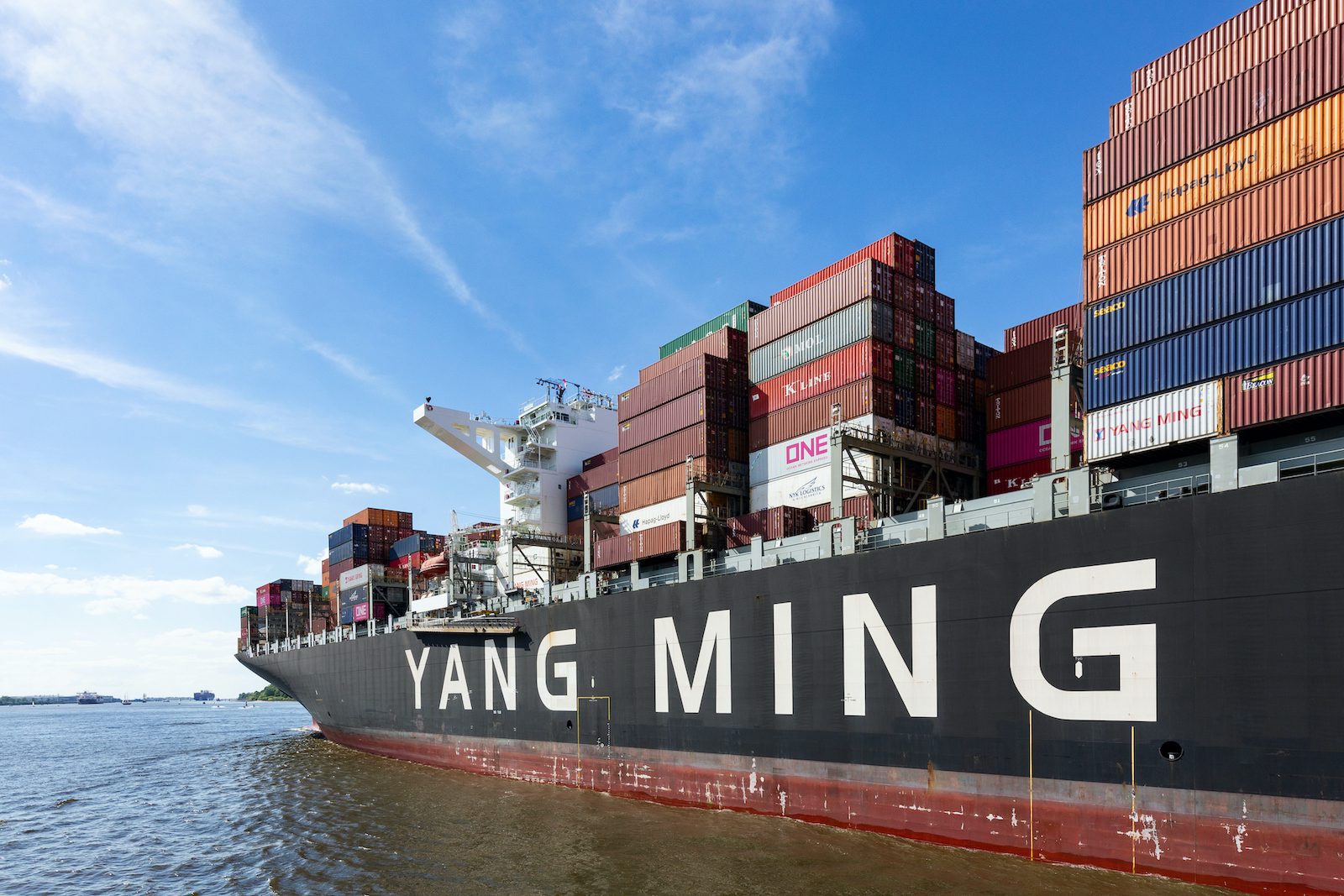U.S. Customs Revenue Tops $100 Billion for First Time Amid Tariff Surge
US revenue from customs duties this fiscal year surpassed $100 billion for the first time, reflecting higher tariffs imposed by the Trump administration.

By Mike Wackett (The Loadstar) –
Mid-sized ocean carriers are losing money and the outlook is particularly bleak for the smaller lines, obliging them to consider radical network restructuring.
Yang Ming posted a net loss of $4m for the second quarter, from revenue of $1.15bn, to take the Taiwanese carrier’s profit at the half-year stage down to $107m.
Like all container lines, Yang Ming enjoyed a highly profitable post-pandemic two years, its net profit last year coming in at around $6bn.
However, similar to its peers, the THE Alliance member’s profitability has waned considerably over the past two quarters as freight rates plunged, with net profit for Q4 22 down to $483m, sliding further in Q1 this year, to $112m.
And, given the deterioration in its Q2 earnings, it’s probably fair to assume that, with the challenging climate, the present quarter will be worse – and Q4 could be much worse.
“In response to the changes in supply and demand in the shipping market, Yang Ming will continue to assess the situation with the upmost care,” it said as it unveiled the Q2 results.
“There will be timely and necessary adjustments to route distribution and fleet planning to increase the company’s competitiveness and operating performance,” added the carrier.
Ninth-ranked Yang Ming, which operates a fleet of 93 vessels for a total nominal capacity of 705,614 teu, has taken an extremely cautious approach to growth, having the smallest orderbook of all its peers – just five ships, for 77,500 teu.
Fellow THE Alliance partner HMM earlier reported a net profit of $230m for Q2 from revenue of $1.66bn, compared with a Q2 22 profit of $2.2bn on turnover of $3.77bn.
HMM attributed the collapse of freight rates and consequent plunge in revenue to “overcapacity against a backcloth of supply chain normalisation”.
It said: “The container shipping industry has been experiencing overcapacity, mainly led by the influx of new containerships ordered during the pandemic. The cascading effect of larger vessels from the main east-west trades to smaller lanes intensified the imbalance between supply and demand.”
The South Korean carrier said it would “continue to carry out service adjustments” and “cost-cutting measures… to cope with market uncertainty”.
HMM sits just above Yang Ming in the global container rankings with a fleet of 72 ships for a capacity of 792,074 teu and, according to Alphaliner data, has a much larger orderbook – 26 vessels with a capacity of 265,027 teu.
Meanwhile, 10th-ranked Zim will publish its second-quarter results later this week, but has already announced a profit warning, adjusting its full-year guidance from a positive ebit of $100m to $500m, to an operating loss of between $100m and $500m – “driven primarily by continued weakness in freight rates across all the company’s trades”.
Zim has an operating fleet of 132 vessels, with a capacity of 578,663 teu, and an orderbook of 38 ships for 306,184 teu secured through long-term charters, as is the majority of its current fleet.
The Loadstar is known at the highest levels of logistics and supply chain management as one of the best sources of influential analysis and commentary.
Sign up for gCaptain’s newsletter and never miss an update

Subscribe to gCaptain Daily and stay informed with the latest global maritime and offshore news


Stay informed with the latest maritime and offshore news, delivered daily straight to your inbox
Essential news coupled with the finest maritime content sourced from across the globe.
Sign Up